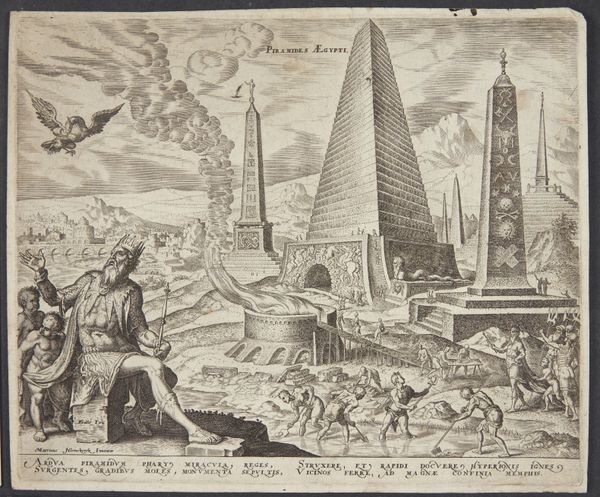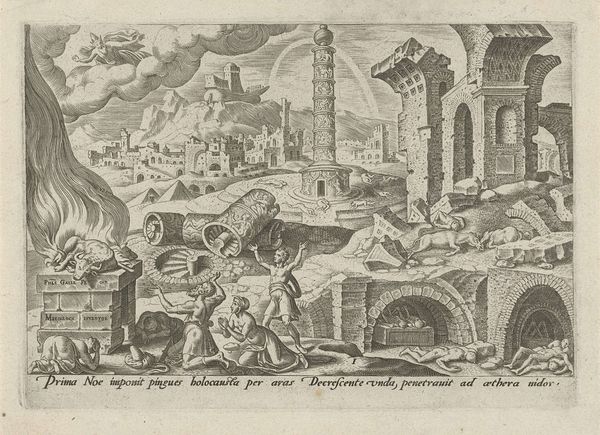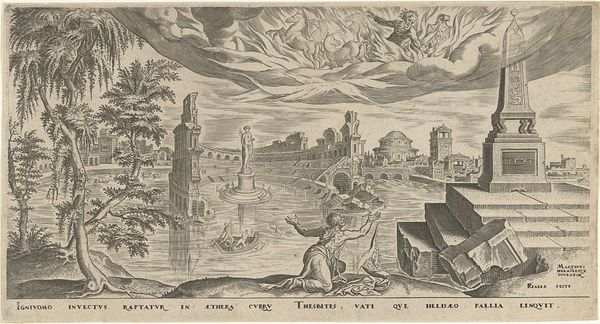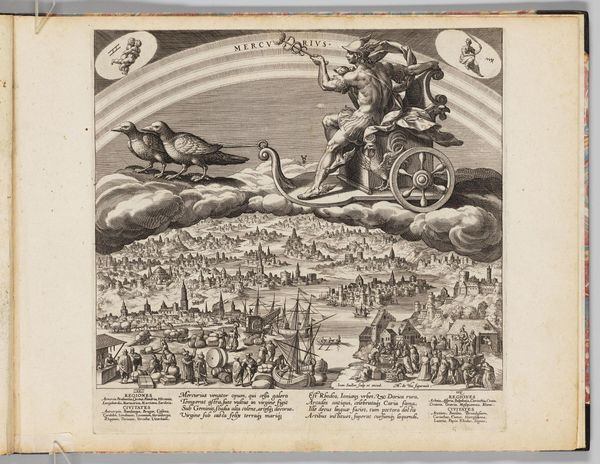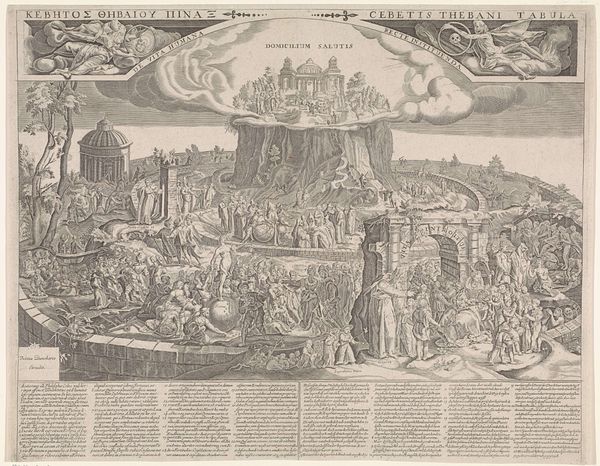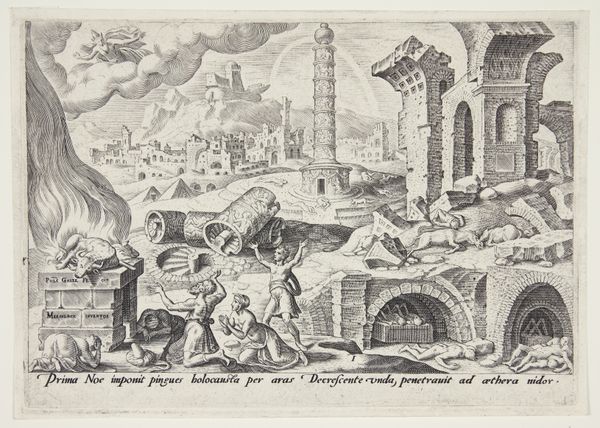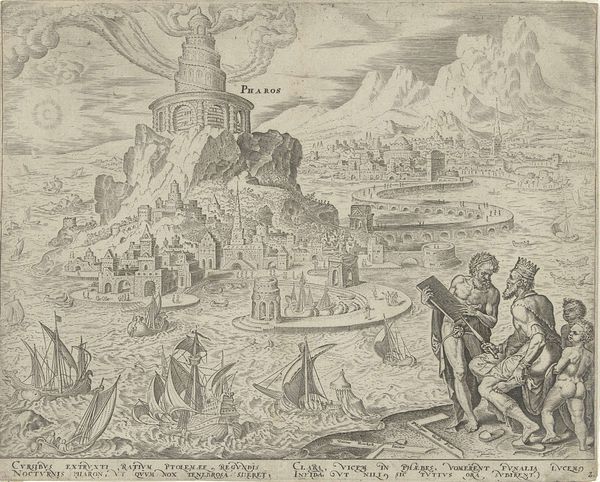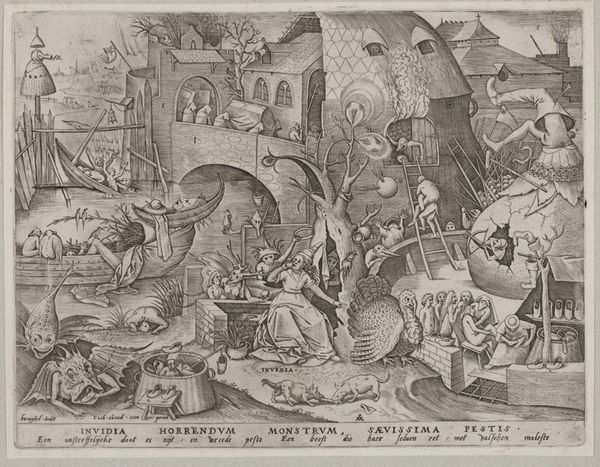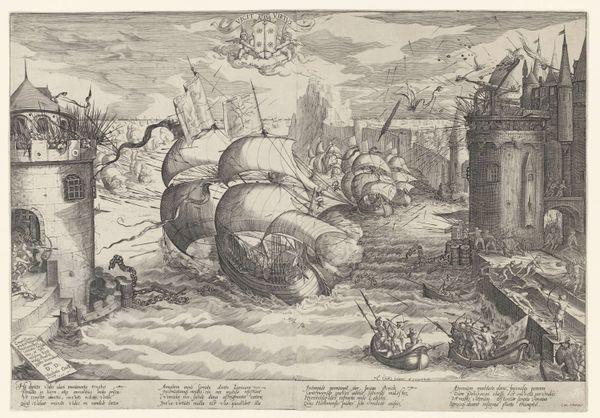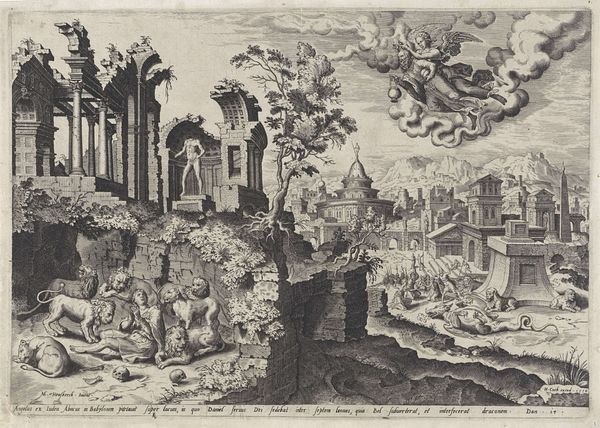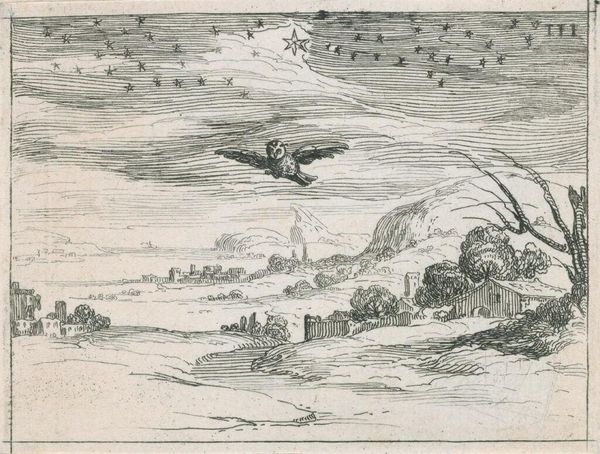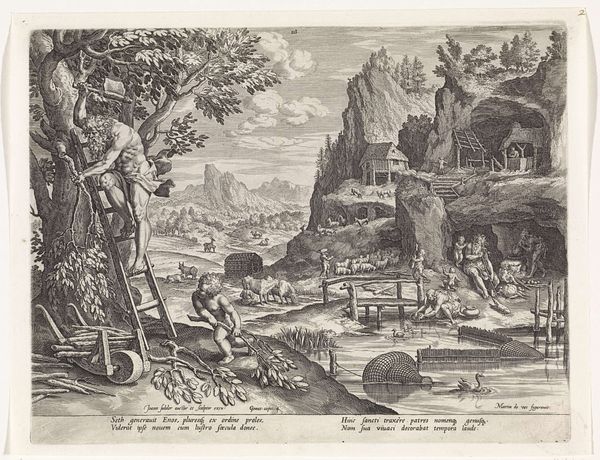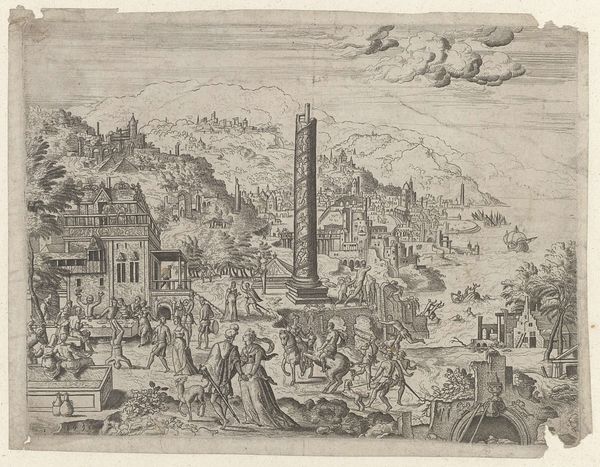
print, engraving
# print
#
landscape
#
perspective
#
ancient-mediterranean
#
cityscape
#
history-painting
#
engraving
Dimensions: height 212 mm, width 259 mm
Copyright: Rijks Museum: Open Domain
Philips Galle created this engraving titled 'The Pyramids of Egypt' in the late 16th century. Dominating the landscape are the pyramids themselves, symbols of immense power and the eternal afterlife for the pharaohs. Note the obelisks, their pointed forms reaching skyward—ancient solar symbols representing stability, creativity, and procreation. Consider the recurrent motif of the obelisk, a form that echoes across millennia, from ancient Egypt to the Washington Monument. Their silhouette can also be seen in the steeples of Christian churches, demonstrating our collective subconscious yearns for connection with higher powers, and the desire to immortalize earthly existence. The pyramid form itself is interesting. It represents a desire for stability but the heavy, symmetrical shape also conveys a sense of oppression. The sheer scale of the pyramids invokes awe, but also the human cost of their construction. This duality engages us on a primal level, evoking both reverence and a profound recognition of our own mortality. The symbols of power and eternal life are deeply rooted in human psychology, reflecting our continuous negotiations with life and death. The image represents not just a historical monument, but a mirror reflecting humanity's enduring aspirations and fears across time.
Comments
No comments
Be the first to comment and join the conversation on the ultimate creative platform.
